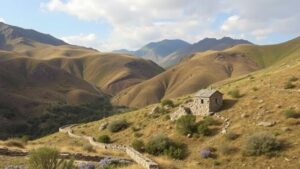Exploring the forgotten significance of the “Gate of the Sun” at Tiwanaku in Bolivia.
Exploring the Forgotten Significance of the Gate of the Sun at Tiwanaku in Bolivia
The Gate of the Sun, or Puerta del Sol, is one of the most remarkable archaeological structures in the ancient city of Tiwanaku, located near Lake Titicaca in Bolivia. Dating back to around 300-1000 CE, this monumental gateway has intrigued researchers and visitors alike due to its intricate stonework and the rich cultural heritage it represents. This article delves into the historical significance, architectural features, and the forgotten narratives surrounding the Gate of the Sun.
A Window into Ancient Tiwanaku
Tiwanaku was a major pre-Columbian city that played a pivotal role in the development of Andean civilization. It is thought to have supported a substantial population, with estimates ranging from 15,000 to 30,000 inhabitants. The citys prominence is attributed to its sophisticated agricultural practices and advanced technology, which allowed for stable food production in a challenging, high-altitude environment.
Within this context, the Gate of the Sun served not just as a physical entryway but as a symbolic threshold that reflects the religious and socio-political beliefs of the Tiwanaku civilization. The monument features meticulously carved stones, many weighing several tons, showcasing ancient engineering prowess that continues to astound modern archaeologists.
Architectural Details of the Gate
The Gate of the Sun is constructed from a single block of andesite, a volcanic rock known for its durability. structure stands about 3.6 meters (12 feet) tall and 4.2 meters (14 feet) wide. One of its most striking features is the central carving of a deity, often identified as the sun god, which underscores the importance of solar worship in Tiwanaku culture.
- Symbolism: The carvings depict various figures, including the well-known Staff God, a representation that embodies power and authority, suggesting that the gate may have served as a ceremonial entrance for important rituals.
- Alignment: The Gate is strategically aligned with the rising sun during the summer solstice, emphasizing its astronomical significance and the civilizations connection to celestial events.
Cultural and Ritual Significance
It is widely believed that the Gate of the Sun was integral to the religious practices of the Tiwanaku people. Archaeological evidence indicates that the site was a pilgrimage destination, where rituals related to agriculture and cosmology were performed. intricate designs on the gate likely tell stories of creation and the cyclical nature of life, resonating deeply with the agricultural calendar of the Andean people.
The presence of similar iconography across various Andean cultures suggests that the reverence for solar deities was a common thread among pre-Columbian civilizations. This aspect points to a potential broader network of cultural exchange, where knowledge and religious practices were shared among neighboring societies.
Forgotten Narratives and Modern Interpretations
Despite its significance, the Gate of the Sun has often been overshadowed by other archaeological sites in South America, such as Machu Picchu. This neglect has led to a lack of comprehensive understanding of its historical importance. Recent studies aim to resurrect these forgotten narratives by examining artifacts and texts that provide insights into the social and political dynamics of the Tiwanaku culture.
Modern interpretations of the Gate of the Sun also explore themes of identity and resistance. As Bolivian identity continues to evolve, the gate serves as a poignant reminder of indigenous heritage and resilience against colonial narratives. This rejuvenated interest is bolstered by the ongoing efforts of local governments and indigenous groups to promote cultural heritage and sustainable tourism.
Real-World Applications and Preservation Efforts
The gate not only serves as an archaeological treasure but also plays a crucial role in educating both locals and tourists about the richness of pre-Columbian history. Its preservation is critical for ensuring that future generations can appreciate the intricacies of the Tiwanaku civilization.
- Tourism Development: Eco-friendly tourism initiatives developed that focus on sustainable practices while respecting the sites cultural significance.
- Educational Programs: Local schools are incorporating the history of Tiwanaku and the Gate of the Sun into their curricula to foster a sense of pride and awareness among the youth.
Conclusion
The Gate of the Sun at Tiwanaku stands as a testament to the artistry, ingenuity, and spirituality of the ancient Andean peoples. Understanding its significance helps bridge the historical chasms that often obscure the narratives of indigenous cultures. By revitalizing interest in this remarkable structure, we not only honor its legacy but also learn valuable lessons about cultural resilience and the importance of preserving our collective heritage.



